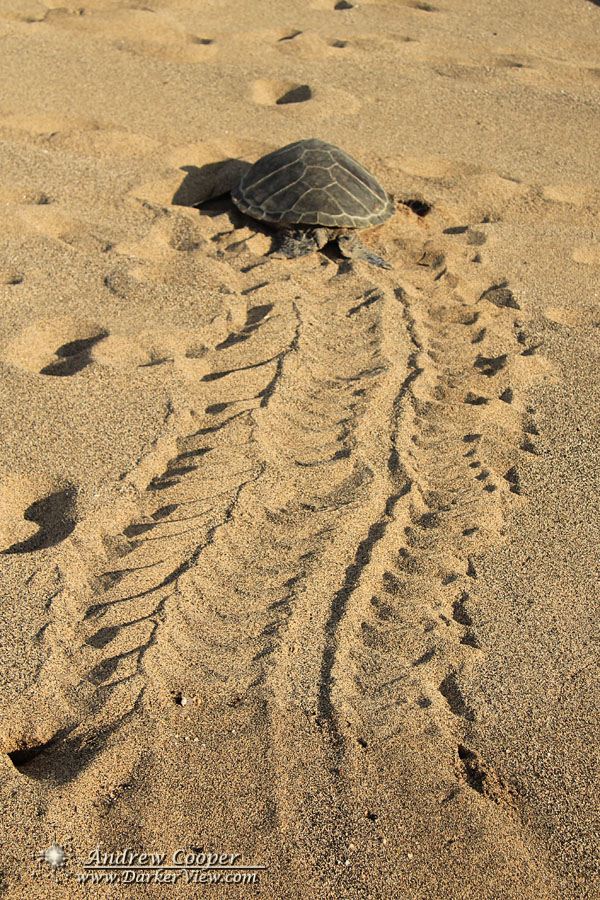Just a few crabs in the trap this morning! Tonight’s dinner will be crab cakes with a crab louie salad. We didn’t scrimp on the amount either, the cakes have twice as much crab as the recipe calls for. No problem… there is no better crab in the world than dungeness!
Postcard from Alaska – Baranof Hot Springs
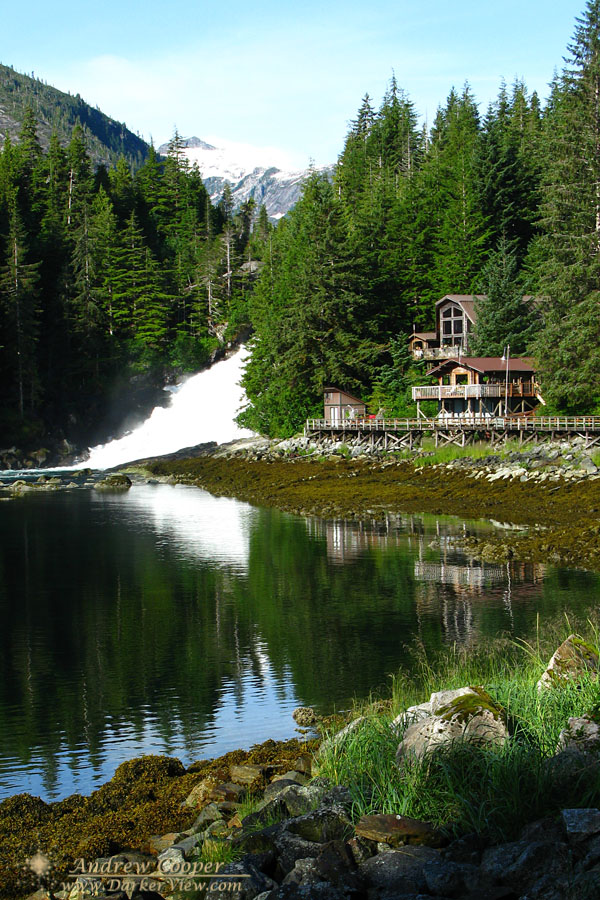
Postcard from Alaska – Black Bear
A young black bear, well known to the staff of the Mendenhall Glacier visitor center, is attempting to catch salmon in Steep Creek, just below the visitor center parking lot. He was not too good at it, lots of splashing and no fish to show for the effort. The fish were there, bright red sockeye salmon busy spawning in the stream bed. This was this bear’s first year on his own, still learning the skills of survival.
Yes, I was really this close to the bear, this was a shot with a standard lens, no telephoto. Fortunately there was a small bridge over the creek to provide a slightly safer vantage point. The bear showed no interest in the gathering crowd of sightseers on the bridge, concentrating on the salmon.

Postcard from the Summit – In The Hall
Another processed infrared image from Mark Devenot. This time the subject is an everyday scene inside the facility with some of the crew standing in the hallway. The odd feature behind them is actually the large doors that lead into the Keck 1 Telescope dome. Everything looks much different in the thermal infrared…
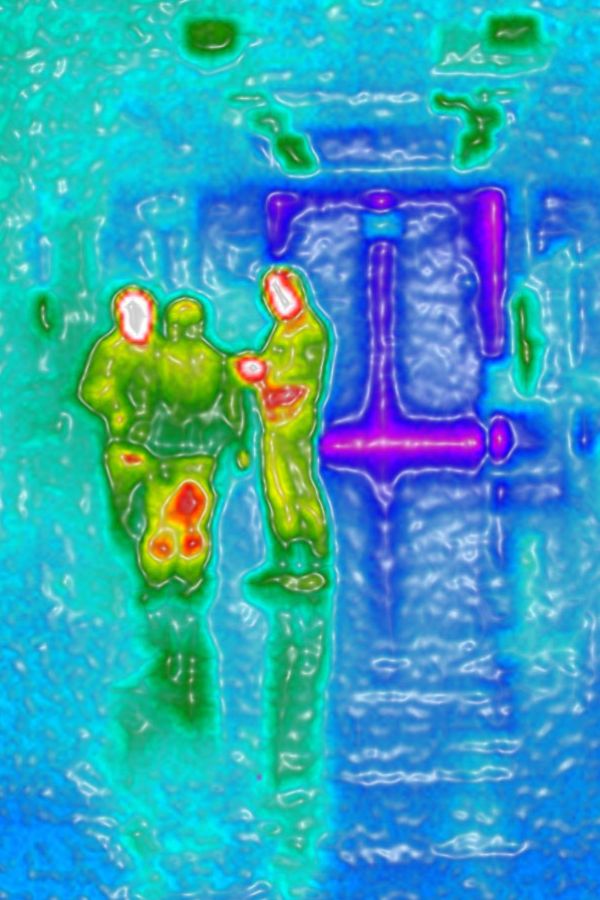
Oops, a little too much power there…
How powerful is the K1 AO laser?
For someone who has lately been used to working around relatively harmless power levels, beams of a few milliwatts, this is a reminder that lasers are potentially very dangerous. With a milliwatt power level beam there is no danger in getting a hand in the beam, be mindful of your eyes, but otherwise not a lot of concern. This is vastly different, beam power here is measured in tens of watts… The bright yellow beam looks so innocent, appears so harmless. Give that beam a chance, a momentary slip, and it will burn you… badly.
Anything in the beam is at risk, even components we thought were robust enough to withstand the power levels. In this case a reflective ND filter that was to reflect most of the beam into a beam dump, allowing a small amount to continue up the beam train for use in alignments. So much for the ratings on the manufacturer’s data sheet, the beam punched through the coating and even started to melt the glass…
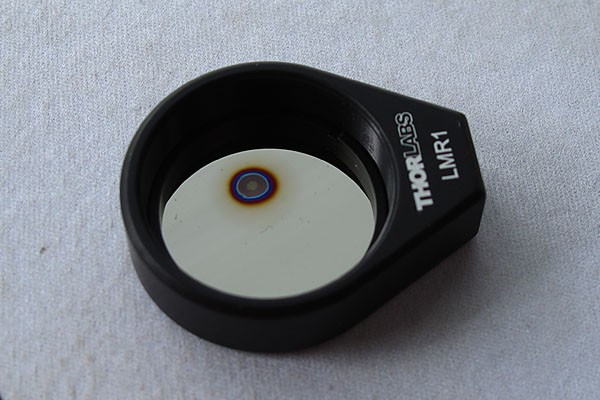
Postcard from the Summit – Red Bow
Waimea is a place of rainbows. So common are they here it is a rare day that goes by without at least one rainbow.
But what does a rainbow look like at sunset? When the Sun’s light is reddened by passage through so much air and haze. The bow will begin to lose all color except for red, this creates a red bow…

Up The Beach
SCRAM!
Shut it down! Shut it all down!
I get home from shopping in Kona and unloading a pile of groceries from Costco. Looking forward to a relaxing Saturday evening. That changed when I checked my e-mail.
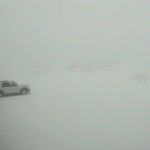
Much of the systems on the summit are automated, up to and including sending e-mails when thing go wrong. The system works pretty well at letting the engineering staff know when attention is needed. The automated messages do tend to bomb a person’s inbox when it really goes bad.
Dozens of warning messages have flooded my inbox…
WARNING! K2AO temps are warm! dmrackTemp=45.42 degC, enclosTemp=37 degC
Ugly numbers indeed! 37°C is about 100°F in the AO electronics room. I have no choice… shut it down. Messages from MKSS indicate that the power lines have been hit by lightning and the power is out to the summit. The backup power is holding out, but the glycol cooling system is off. Without cold glycol flowing in the lines many of the rooms are without cooling systems to take away the heat generated by all of the computers and other electronics.
Good Old Girl
A re-post, but apropos at the moment…
A very nice musical compilation based on imagery of and from the Mars Rovers, Spirit and Opportunity. The set is put to some very appropriate music by Marian Call. Give it a listen while you consider the wear and tear of seven years on Mars…
How bad is it?
One of the miscellaneous systems in the observatory that I have inherited is the weather station. A critical set of gear that has been neglected far too long. Neglected to the point our telescope operators had been complaining, loudly, about a system that frequently gives erroneous data or provides wildly oscillating readings.

The first part I have replaced is the humidity and dew point sensor. In many ways the most important part of the system. The new unit is a modern sensor with a direct ethernet interface, simple to link into the observatory network. This is the same sensor used by the National Weather Service in their remote weather stations. All I had to do was spend a little money, and spend a day hanging off the weather tower on the observatory roof installing it. It was a beautiful, warm, sunny day up there, I got the job done, and got a slight sunburn in the process.

